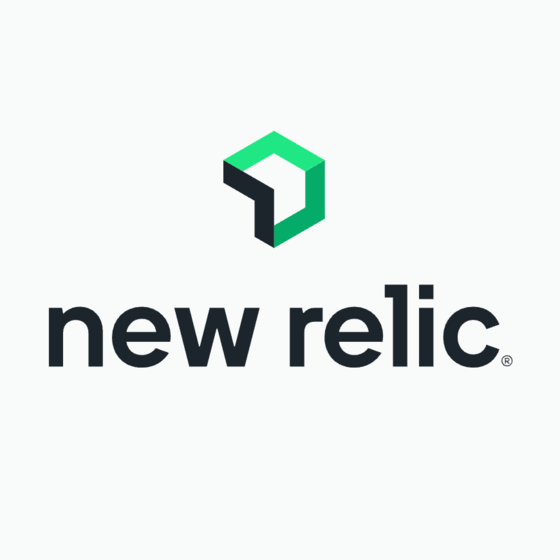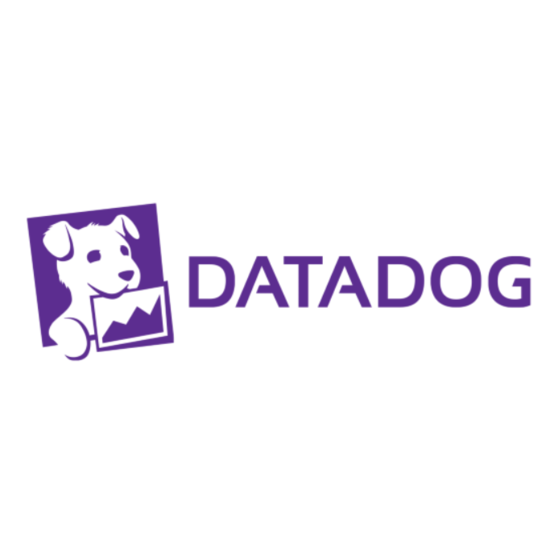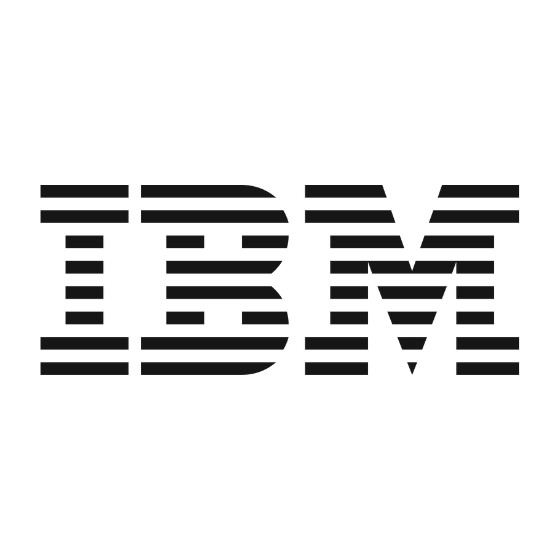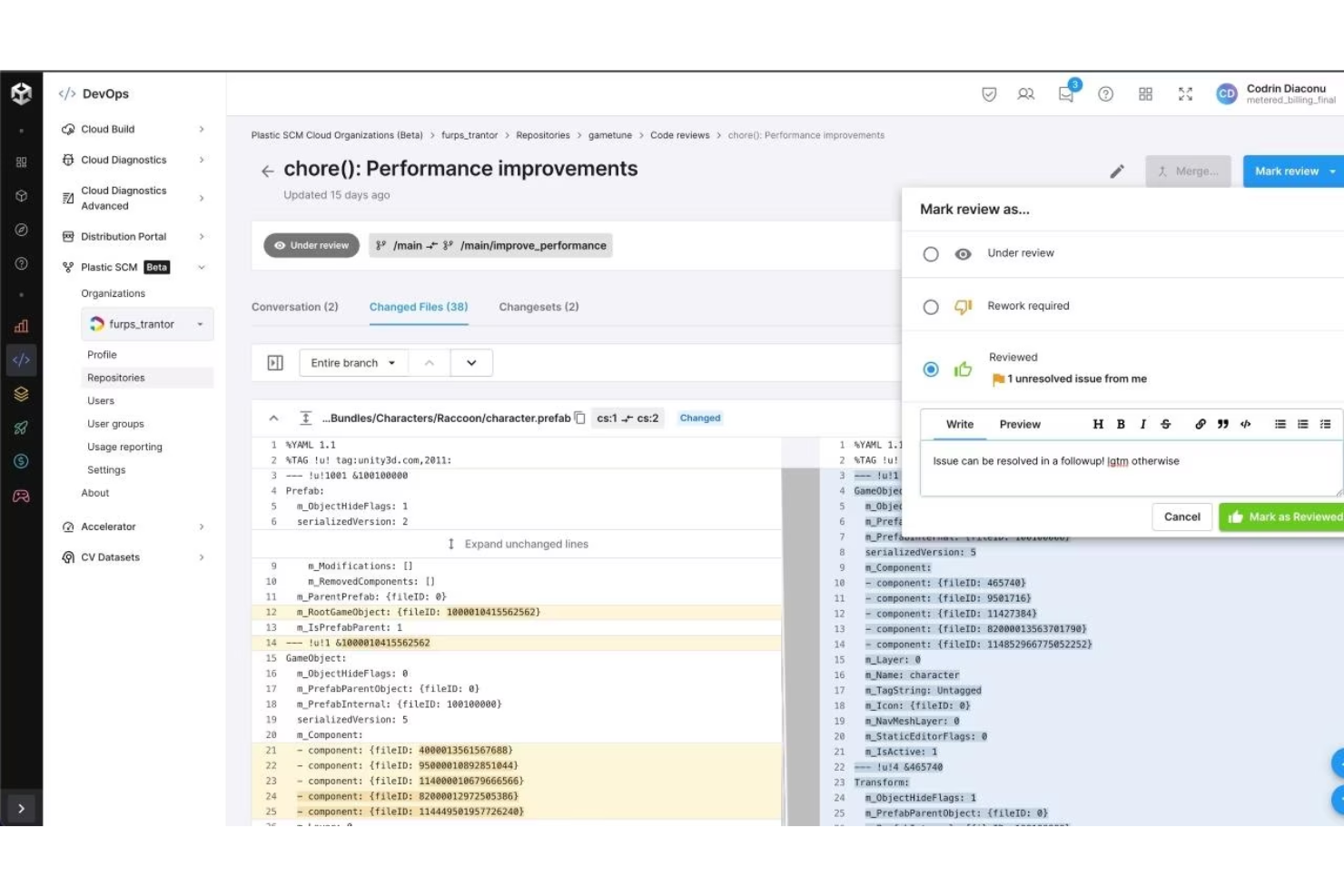10 Best Version Control Tools Shortlist
Here's my pick of the 10 best software from the 20 tools reviewed.
Our one-on-one guidance will help you find the perfect fit.
Choosing a version control tool isn't just a technical decision — it's a team decision. Maybe you've outgrown your current setup, or you're hitting walls with merge conflicts, lost work, or clunky collaboration. Or maybe you're building out your dev stack for the first time and want to get it right from day one.
I've worked with everything from fast-moving startup teams to enterprise-scale engineering orgs, testing version control tools in real-world workflows. Along the way, I’ve seen how the right (or wrong) system can either accelerate shipping — or create costly bottlenecks. In this guide, I’ll break down the best tools out there, what they’re great at, and who they’re really for — so you can make a confident decision that fits your team.
Why Trust Our Software Reviews?
We’ve been testing and reviewing software since 2023. As IT and data specialists ourselves, we know how critical and difficult it is to make the right decision when selecting software.
We invest in deep research to help our audience make better software purchasing decisions. We’ve tested more than 2,000 tools for different IT use cases and written over 1,000 comprehensive software reviews. Learn how we stay transparent & our review methodology.
The 10 Best Version Control Tools Summary
| Tool | Best For | Trial Info | Price | ||
|---|---|---|---|---|---|
| 1 | Best version control tool for version analysis | Free plan + demo available | Pricing upon request | Website | |
| 2 | Best for infrastructure and container monitoring | 14-day free trial available | From $15/user/month | Website | |
| 3 | Best free and open-source version control system | Not available | Free To Use | Website | |
| 4 | Best centralized version control system for file locking and merge tracking | Not available | Free To Use | Website | |
| 5 | Best free version control tool for handling large projects | Free demo available | Free to use | Website | |
| 6 | Best for collaborating on code and customizing user-specific access to your repositories | Free tier available | Pricing upon request | Website | |
| 7 | Best source control system for managing game development projects | Free plan available | Pricing upon request | Website | |
| 8 | Best for tracking project history and collaborating with others | Not available | Free to use | Website | |
| 9 | Best tool for versioning your database | Free trial available | Pricing upon request | Website | |
| 10 | Best for meeting compliance requirements | Not available | Pricing upon request | Website |
-

Docker
Visit WebsiteThis is an aggregated rating for this tool including ratings from Crozdesk users and ratings from other sites.4.6 -

Pulumi
Visit WebsiteThis is an aggregated rating for this tool including ratings from Crozdesk users and ratings from other sites.4.8 -

GitHub Actions
Visit Website
Overviews Of The 10 Best Version Control Tools
Here’s a brief description of each version control tool that showcases each software’s best use case, outstanding features, and some pros and cons. I’ve also included screenshots to give you a snapshot of their user interface too.
New Relic is a software analytics product that's all about providing real-time insights into your software performance. It's not just a version control tool, it's more like a Swiss Army knife for your software, helping you monitor, troubleshoot, and optimize your applications.
Why I Picked New Relic: New Relic's mobile monitoring involves a comprehensive examination of the adoption and operational effectiveness among different iterations of your application. This encompasses key versions distinguished by factors such as interaction duration, active user sessions, and error occurrences. On the Versions page, there exists a table that juxtaposes each version based on its creation date, average memory and CPU usage, mean sessions per minute, as well as the average requests per minute (RPM) per active application. For more in-depth insights into a particular version, the option to delve into supplementary details is also available.
New Relic Standout Features & Integrations
Features include the ability to drill down into your data. You can get really granular with your analysis, which is super helpful when you're trying to troubleshoot a specific issue or optimize a particular aspect of your software. Plus, it's got some helpful, custom alerting capabilities, so you can stay on top of any issues that arise.
Integrations include over 500 apps that include cloud platforms like AWS, Google Cloud, and Microsoft Azure, CI/CD tools like Jenkins, CircleCI, and Travis CI, communication tools like Slack and PagerDuty, and other monitoring and analytics tools like Grafana, Datadog, and Splunk. It also has an API you can use to build custom integrations.
Pros and cons
Pros:
- Wide range of monitoring capabilities
- AI-powered anomaly detection and intelligent alerting
- Integrates seamlessly with popular dev tools
Cons:
- Added complexity from reliance on agents installed on application servers
- Bigger focus on reporting rather than facilitating actions
Datadog is a leading monitoring and security platform that provides the monitoring capabilities you need to see inside your infrastructure at any scale and from anywhere.
Why I picked Datadog: This platform is on my list due to its unique infrastructure monitoring capabilities. It gives you visibility into your infrastructure performance and lets you know when there is a need to optimize anything with minimal maintenance and unparalleled breadth of coverage. Datadog offers real-time visibility, metrics, visualizations, and alerts to help you keep track of your cloud or hybrid environments and manage changes effectively.
Datadog Standout Features and Integrations
Standout features include container monitoring, CI visibility, and database monitoring. Datadog provides your agile team with comprehensive visibility into your CI environments, helping you to streamline your CI/CD workflows. It helps you track the health and performance of your codebase and also allows you to monitor your CI data by repository, branch, or commit. Comprehensive CI visibility makes it easier to fix issues, reduce CI costs, and ship better products.
Integrations are available with a wide range of third-party tools, including Slack, Google Workspace, Microsoft 365, GitHub, Jira, Microsoft Teams, Rippling, Zendesk Suite, Google Cloud, and MySQL.
Pros and cons
Pros:
- Good alerting system
- It improves collaboration
- Friendly pricing
Cons:
- Slow response from the support team
- Steep learning curve
This is a free and open-source distributed version control tool designed to help developers manage coding projects (small and large) with speed and efficiency.
Why I picked Git: Git is on my list because it offers industry-standard version control capabilities for free. I also considered Git because global giant companies, like Google, Microsoft, and Netflix, are using it. Git is easy to learn and has a very small footprint with ultra-fast performance.
Git is designed from the ground up to perform with exceptional speed and efficiency. Most of its operations are executed locally, making it very fast since there is no need to communicate with a server somewhere. It can handle large repositories as it was built to work on the Linux kernel. In addition, the overhead of runtimes that come with high-level languages is reduced since Git is written in C.
Git Standout Features and Integrations
Standout features that set Git apart include cheap local branching and convenient staging areas. Git’s branching and merging model allows you to create multiple local branches that are entirely independent of each other. This empowers you to execute frictionless context switching, role-based codelines, feature-based workflow, and disposable experimentation.
Git has an outstanding feature known as Staging Area or Index. Staging Area is an intermediate area where commits can be formatted and reviewed prior to completing the commit. This capability enables developers to quickly stage some of their files and commit them without committing all of the other files that are modified in their working directory.
Integrations include Datadog, GitHub, TIBCO Data Virtualization, Visual Studio Code, Coalesce, Telerik, TestComplete, and Sisense.
Pros and cons
Pros:
- Very secure
- An active user community
- Available for free
Cons:
- Learning and mastering Git takes time
- Resolving merge conflicts can be tedious
Best centralized version control system for file locking and merge tracking
Apache Subversion is a feature-rich version control system originally designed to replace CVS. It's an enterprise-level, centralized, open-source version control tool that supports the needs of a wide variety of users and projects.
Why I picked Subversion: In addition to industry-leading version control capabilities, Subversion allows file locking. This feature lets you lock files so that developers can be alerted when other users are attempting to edit the same file. This prevents the modification of certain files by unauthorized users.
The tool also offers merge tracking, which provides automated assistance with managing the flow of modifications between lines of development and with the merging of branches back into their sources.
Subversion Standout Features and Integrations
Standout features include interactive conflict resolution, atomic commits, and cheap branching and tagging. Subversion supports interactive conflict resolution as one of the ways of fixing conflicting changes. Atomic commits entail that no part of a commit becomes active or takes effect until the entire commit has succeeded. Moreover, common operations are versioned, including copying, deleting, and renaming.
Integrations include ReqView, Alert Logic MDR, TIBCO Data Virtualization, Coverity, Collaborator, Visual Expert, C++Builder, devZing, Kanbanize, and Allstacks.
Pros and cons
Pros:
- Easy to use
- Committing and merging code is pretty straightforward
- Available for free
Cons:
- Tracking the merges can be complex
- Sometimes, it takes a long time to load changes
Mercurial is a distributed source control management system designed to manage development projects of any size. It's free, easy to use, and comes with an intuitive interface.
Why I picked Mercurial: This version control solution is fast, powerful, and capable of handling projects of any size and kind. Mercurial supports a wide range of workflows; this allows you to use the system in ways that suit your project and your team’s preferences. You can enhance Mercurial’s capabilities with extensions.
Mercurial Standout Features and Integrations
Standout features: Mercurial provides a simple and detailed tutorial on how to version control your documents. Its comprehensive guide provides the information new and existing users need to maximize the tool’s features. With Mercurial, committing, branching, and merging are fast and cheap due to its distributed architecture.
Integrations include IntelliJ IDEA, Black Duck, QF-Test, Coverity, TestComplete, and RAD Studio. Mercurial has a wide range of other extensions, including Bugzilla, Balckbox, Censor, Churn, Clonebundles, and Githelp.
Pros and cons
Pros:
- Easy to use
- It’s free and open-source
- Highly extensible
Cons:
- UI needs to be improved
- Some configurations are difficult
Best for collaborating on code and customizing user-specific access to your repositories
AWS CodeCommit is a managed source code control service. It allows you to host very scalable private Git repositories and provides collaborative features for working together on code.
Why I picked AWS CodeCommit: It makes things a lot easier for developers by getting rid of the need to host, maintain, backup, or scale their source control infrastructure. AWS CodeCommit improves collaboration, enabling development teams to boost productivity. You can implement collaborative workflows, such as code review and feedback.
The software allows you to control who can execute changes to certain branches. This is a project management feature that enables you to ensure that only authorized users are permitted to alter some sensitive parts of your code repository. It reduces conflicts and improves efficiency.
AWS CodeCommit Standout Features and Integrations
Standout features: AWS CodeCommit allows you to build up to a thousand repositories by default. You can store and version any kind of file and create up to 25,000 more repositories by request. It offers an outstanding alerting solution, which helps you get notified when there is an event affecting your repositories. Additionally, AWS CodeCommit gives you control over your software projects by allowing you to keep using your favorite development environments and DevOps toolset.
Integrations include SAS Visual Analytics, SAS Customer Intelligence 360, Relution, Kaholo, Eclipse, Visual Studio, AWS Cloud9, Sourcegraph, Jira Cloud, and Tenable.
Pros and cons
Pros:
- Flexible pricing model
- Get started for free with AWS Free Tier
- Free AWS training
Cons:
- Complex UI for new users
- Configurations are a bit difficult
Best source control system for managing game development projects
Unity Version Control, powered by Plastic SCM technology, is designed to offer developers version control solutions they need to overcome game development challenges. Plastic SCM is now a part of Unity DevOps after it was acquired by Unity in 2020.
Why I picked Unity Version Control: It’s a scalable version control and source code management solution specially designed for game development studios. It features optimized workflows for artists and programmers. Unity Version Control helps developers reduce conflicts and speed up production by providing industry-standard branching and merging capabilities.
It enables you to set up dedicated cloud servers to empower your teams to collaborate effectively. Your team members can collaborate and share resources from anywhere in the world, regardless of the complexity of the project.
Unity Version Control Standout Features and Integrations
Standout features: It comes with built-in capabilities for handling the complexities of game development. As a result, its speed and performance are not impacted when it handles big files and huge repos. This system is designed to handle large files and repos. It also gives you the flexibility to code in a centralized or distributed environment with full branching and merging solutions.
Integrations: It allows you to integrate with tools for issue tracking, collaboration, communication, CI, IDEs, and more. Key integrations include Unity, Rider, TeamCity, Bamboo, Jira, and Unreal Engine.
Pros and cons
Pros:
- Operates across tools
- Flexible pricing model
- You can get started for free
Cons:
- Automated, user-configurable reporting required
- Steep learning curve
This version control tool provides capabilities for managing project history and fostering collaboration among developers.
Why I picked Bazaar: I selected this software because it’s highly adaptable. No matter what your needs are, Bazaar scales and adapts to meet them. So, as your project needs evolve, this tool is scalable enough to accommodate changes in workload without sacrificing speed and performance. As your needs and activities continue to change, the system helps you track project history over time.
Bazaar Standout Features and Integrations
Standout features: Bazaar comes with outstanding collaboration features. With the tool, you can collaborate easily with others. If your team members are scattered across the globe, Bazaar provides what you need to work together as a single team, sharing resources and communicating effectively. With plugins and custom integrations, you can extend Bazaar with additional features.
Integrations include Nautilus, MonoDevelop, TextMate, Eclipse, IntelliJ IDEA, Visual Studio, Review Board, HPE Consumption Analytics, and Gedit.
Pros and cons
Pros:
- Good user support
- Active user community
- It’s free
Cons:
- Steep learning curve
- Can be a bit slow
The software provides version control solutions for your database. Flyway lets you migrate your database with ease and also gives you better control of your migrations.
Why I picked Flyway: Flyway is designed to make database migrations easy by providing version control for your database. You can migrate from any version to the latest version of the schema. It lets you migrate with no limits with the help of Java-based migrations for advanced data transformations and handling with LOBs.
There are no dependencies required; with Java 7+ and your Jdbc driver, you’ve got all you need. Flyway’s offerings are reliable and safe for cluster environments. You can have multiple machines migrate in parallel.
Flyway Standout Features and Integrations
Standout features include cloud support and auto-migration on startup. There is full cloud support for Google Cloud SQL, Heroku, Microsoft SQL Azure, Amazon RDS, and more. With the auto-migration on startup capability, you can deploy migrations together with the application and automatically execute them on startup using the API.
Integrations include Heroku, SQLite, MySQL, Snowflake, Amazon RDS, Firebird, Google Cloud SQL, Azure SQL Database, SAP HANA, MariaDB, and PostgreSQL.
Pros and cons
Pros:
- Easy to set up
- Good support
- There is an active user community
Cons:
- More programming language support needed
- Pricing is on the high side
This is an enterprise-level configuration management tool that offers controlled access to software assets. IBM Rational ClearCase offerings include automated workspace management, secure version management, and build auditing.
Why I picked Rational ClearCase: This software gives you better control of your development activities. It allows you to manage personal workspaces and offers access to the file and directory versions you need. Rational ClearCase helps you meet compliance requirements by providing user authentication and audit trails all with minimal administrative challenges.
Another thing that sets this tool apart is that it offers improved time to value. It helps developers avoid mistakes, minimize bugs, and spot errors in code earlier.
Rational ClearCase Standout Features and Integrations
Standout features: Rational ClearCase provides developers with scalable deployment. It supports thousands of users that are handling terabytes of data at a wide range of sites. With this tool, you also enjoy security version management and IP protection with a centralized repository in which you can capture and version assets with maximum security.
Integrations include ClearQuest, Apex, ClearDDTS, PurifyPlus, Rose, RequisitePro, and Rose RealTime.
Pros and cons
Pros:
- Work quickly and independently
- Very secure
- Flexible and scalable
Cons:
- More customization needed
- New users find some settings complicated
Other Options
Here are a few more worthwhile options that didn’t make the best version control tools list:
- Helix Core
Version control tool for tracking every digital asset in one place
- Azure DevOps Server
Tool for fostering collaboration among developers
- CVS
For keeping a record of the history of sources files and documents
- SCM-Manager
For managing and sharing your Git, Mercurial, and Subversion repositories
- Liquibase
Version control system for your database
- ArX
Software for anonymizing sensitive personal data
- Darcs
Free and open-source, cross-platform version control system with a focus on changes rather than snapshots
- Monotone
For implementing history-sensitive merging, lightweight branches, and integrated code review
- SourceAnywhere
For handling large repositories and fast remote access for geographically distributed teams
- Kallithea
For supporting Mercurial and Git wire protocols
Related Software Reviews
If you still haven't found what you're looking for here, check out these alternative tools that we've tested and evaluated.
- Network Monitoring Software
- Server Monitoring Software
- SD-Wan Solutions
- Infrastructure Monitoring Tools
- Packet Sniffer
- Application Monitoring Tools
Version Control Tool Selection Criteria
When selecting the best version control tools to include in this list, I considered common buyer needs and pain points like maintaining code consistency across teams and avoiding merge conflicts. I also used the following framework to keep my evaluation structured and fair:
Core Functionality (25% of total score)
To be considered for inclusion in this list, each solution had to fulfill these common use cases:
- Track changes to source code
- Collaborate with multiple developers
- Manage code branches and merges
- Roll back to previous versions
- Integrate with CI/CD pipelines
Additional Standout Features (25% of total score)
To help further narrow down the competition, I also looked for unique features, such as:
- Built-in code review tools
- Visual branch management interface
- Support for large binary files
- Cloud-hosted and self-hosted options
- AI-assisted merge conflict resolution
Usability (10% of total score)
To get a sense of the usability of each system, I considered the following:
- Clean and intuitive user interface
- Clear visualizations of version history
- Minimal learning curve for new users
- Logical navigation and tool layout
- Helpful in-app tips or guidance
Onboarding (10% of total score)
To evaluate the onboarding experience for each platform, I considered the following:
- Availability of interactive product tours
- Quality and clarity of documentation
- Access to training videos and webinars
- Ease of migrating existing repositories
- Support during initial setup phase
Customer Support (10% of total score)
To assess each software provider’s customer support services, I considered the following:
- Availability of live chat or email support
- Response time to technical inquiries
- Access to community forums or knowledge base
- Willingness to assist with troubleshooting
- Support offered during onboarding
Value For Money (10% of total score)
To evaluate the value for money of each platform, I considered the following:
- Range of features offered at each pricing tier
- Free or open-source options available
- Transparent and scalable pricing plans
- Cost relative to similar tools
- Discounts for teams or educational use
Customer Reviews (10% of total score)
To get a sense of overall customer satisfaction, I considered the following when reading customer reviews:
- Reported issues or common complaints
- Reported reliability and stability
- Quality of the user experience
- Developer satisfaction with collaboration tools
- Feedback on customer support quality
How to Choose Version Control Tools
It’s easy to get bogged down in long feature lists and complex pricing structures. To help you stay focused as you work through your unique software selection process, here’s a checklist of factors to keep in mind:
| Factor | What to Consider |
|---|---|
| Scalability | Make sure the tool can handle more repositories, users, and complex branching as your team grows. |
| Integrations | Look for native integrations with your CI/CD pipeline, issue trackers, and IDEs to keep workflows smooth. |
| Customizability | You’ll want control over workflows, branching models, and permissions to match how your team operates. |
| Ease of Use | The UI should be intuitive enough for new devs while still powerful for advanced users. |
| Budget | Check how pricing scales with users and projects. Some tools offer strong free plans or educational discounts. |
| Security Safeguards | Ensure it supports access control, audit logs, and encryption for codebase protection. |
| Collaboration Tools | Built-in code reviews, inline comments, and other SCM tools help your team ship code faster together. |
| Performance | Look for fast cloning, committing, and branching—especially for large or distributed teams. |
Trends in Version Control Tools
In my research, I sourced countless product updates, press releases, and release logs from different version control tool vendors. Here are some of the emerging trends I’m keeping an eye on:
- AI-Assisted Conflict Resolution: Tools are starting to use AI to help resolve merge conflicts faster and with fewer mistakes. GitHub Copilot and others are testing ways to predict how code should merge based on context.
- Improved Visual Interfaces: More tools are adding visual ways to view branches, commits, and project history. GitKraken and Sourcetree lead here, helping users see and understand changes more clearly.
- Built-In Code Collaboration: Version control tools are starting to offer native support for pair programming, inline comments, and real-time edits. GitHub’s Codespaces and Visual Studio Live Share are good examples.
- Focus on Monorepo Support: Large teams managing multiple projects in one repo need better tooling. More platforms are improving performance and adding features for monorepo workflows, like Nx or Google's Piper.
- Shift Toward Cloud-First Tools: Cloud-hosted solutions are becoming more common as teams prioritize remote access and less maintenance. Tools like GitHub, GitLab, and Bitbucket are pushing new cloud-only features first.
What Are Version Control Tools?
Version control tools are software used to track and manage changes to code or documents over time. They allow multiple users to work simultaneously on the same set of files, providing mechanisms for merging changes and resolving conflicts. These tools maintain a history of all modifications to the files, enabling teams to track who made specific changes and when.
The benefits of using version control tools include improved collaboration, as they allow teams to work together efficiently on the same project without overwriting each other's contributions. They provide a reliable way to track changes, which is essential for undoing mistakes and understanding the evolution of a project. These tools also facilitate branching and merging, enabling teams to develop features or fix bugs in parallel without disrupting the main codebase. Additionally, version control systems enhance the overall security and integrity of a project by offering robust backup and restore capabilities, along with detailed audit trails of changes.
Features of Version Control Tools
When selecting version control tools, keep an eye out for the following key features:
- Branch management: Lets teams work on different features or fixes simultaneously without affecting the main codebase.
- Merge conflict resolution: Helps identify and resolve conflicting changes when merging code from different sources.
- Commit history: Tracks every change made to the codebase so you can review, audit, or revert changes as needed.
- Access controls: Restricts who can read from or write to specific parts of a repository to protect sensitive code.
- Code review workflows: Allows team members to review and approve changes before they’re merged into production.
- Rollback capabilities: Lets users revert to previous versions of the codebase if something breaks or goes wrong.
- File locking: Prevents multiple users from editing the same file simultaneously, which is especially useful for binary files.
- Continuous integration tools: Integrates with CI tools to trigger builds and tests automatically after code changes.
- Repository cloning: Lets developers create a local copy of the repository to work offline and push changes later.
- Change tracking and diff views: Highlights exactly what lines of code were added, removed, or modified in each commit.
Benefits of Version Control Tools
Implementing version control tools provides several benefits for your team and your business. Here are a few you can look forward to:
- Fewer coding mistakes: You can catch and fix issues early with commit history, code reviews, and easy rollback options.
- Better team collaboration: Branching and merging let multiple developers work on the same project without stepping on each other’s toes.
- Faster debugging: When something breaks, you can trace exactly what changed and when using detailed change logs.
- Easier onboarding: New developers can clone the repo and get started right away with full access to the project’s history.
- More secure code: Access controls and audit trails help keep your code safe and track who made which changes.
- Smoother releases: Integration with CI tools makes it easier to test and deploy code automatically after changes are committed.
- Clear project history: You always have a full record of what’s been done and why, which helps with audits or handoffs.
Costs and Pricing of Version Control Tools
Selecting version control tools requires an understanding of the various pricing models and plans available. Costs vary based on features, team size, add-ons, and more. The table below summarizes common plans, their average prices, and typical features included in version control tool solutions:
Plan Comparison Table for Version Control Tools
| Plan Type | Average Price | Common Features |
|---|---|---|
| Free Plan | $0 | Basic repository hosting, limited collaborators, community support, and public projects. |
| Personal Plan | $5–$10/user/month | Private repositories, basic CI/CD tools, limited integrations, and role-based permissions. |
| Business Plan | $12–$25/user/month | Advanced collaboration code tools, priority support, SSO, and audit logs. |
| Enterprise Plan | $30–$60/user/month | Custom hosting options, granular permissions, compliance tools, and dedicated support. |
Version Control Tools FAQs
Here are some answers to common questions about version control tools:
How do distributed and centralized version control systems differ?
Distributed systems, like Git, let each developer have a full copy of the repository, allowing for offline work and independent branching. Centralized systems, such as Subversion (SVN), rely on a single central repository, requiring a network connection for most operations. Distributed systems often offer more flexibility, while centralized ones can be simpler to manage.
Can version control tools handle large binary files?
Some tools struggle with large binaries, leading to bloated repositories and slow performance. However, extensions like Git LFS (Large File Storage) help manage large files efficiently by storing them outside the main repository. It’s important to check if your chosen tool supports such extensions if you work with large assets.
How do version control tools integrate with CI/CD pipelines?
Many version control tools integrate with Continuous Integration/Continuous Deployment (CI/CD) systems to automate testing and deployment. For example, GitHub integrates with GitHub Actions, and GitLab offers built-in CI/CD capabilities. These integrations help streamline your development workflow.
What security features should I look for in a version control tool?
Key security features include access controls to restrict repository permissions, audit logs to track changes, and encryption for data in transit and at rest. Evaluating these features is essential to protect your codebase from unauthorized access and ensure compliance with security policies.
Is it possible to migrate from one version control system to another?
Yes, migrating between systems is possible but can be complex. Tools like ‘git-svn’ facilitate migration from SVN to Git by preserving commit history. Thorough planning and testing are crucial to ensure a smooth transition and maintain data integrity.
How do version control tools support collaboration in remote teams?
Version control tools enable remote collaboration by allowing multiple developers to work on the same codebase simultaneously. Features like branching, merging, and pull requests help manage changes and facilitate code reviews, ensuring code quality and consistency across distributed teams.
Final Thoughts
My list features high-performance version control solutions capable of handling any workload, from small to large repositories. All you need to do is evaluate your project's needs and team’s capabilities. Afterward, choose one or more tools that suit your needs and are scalable enough to meet your demands as your projects evolve in the future.
Software development tools and the quality assurance industry are vast and interesting. Do you want to learn more about software testing tools? Subscribe to The QA Lead newsletter for fresh articles, how-to guides, podcasts, tool reviews, updates, and expert insights from leaders in the QA industry.
























